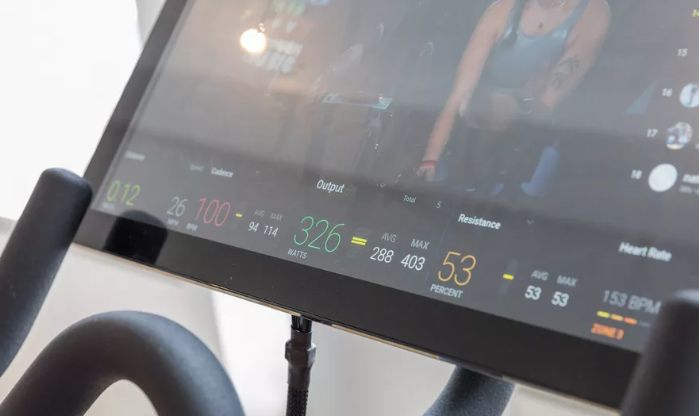Peloton continued to receive nearly $1 billion in investments before listing.
Editor’s note: This article is from WeChat public account “Sports big business” (ID: Sportsmoney), author Ma Lianhong.
On October 3, Peloton (PTON), known as the “fitness apple”, fell more than 10% to $22.51 per share, with a market capitalization of $6.314 billion. When it went public on September 26, Peloton’s issue price was $29 per share, valued at $8.1 billion. Just a week later, the company’s market value evaporated by nearly $1.8 billion.
Peloton’s exercise bikes and treadmills are smarter than the traditional gym’s bulky equipment. Based on these online payment courses for smart fitness hardware, Peloton’s capital story looks tempting and has received nearly $1 billion in investments before going public. This kind of financing myth that rarely occurs in the fitness industry has set off a wave of “Peloton” at home and abroad.
Peloton breaks fitness limits
The word “Peloton” is derived from the French platoon, meaning “big forces” in road cycling. Riding in large units can save energy and reduce wind resistance. It’s also like Peloton’s current development position, not just a fitness company, but also in the retail, logistics, hardware, software, clothing and media sectors.
Peloton was founded in 2012 and launched its first networkable bike in 2014 for $2,000. Since the bike requires a dedicated installation, the purchaser will also need to pay an additional $250 shipping fee.
Peloton’s classic bike has a 22-inch HD sweat-absorbent touch screen that provides 12 hours of live live and recorded lessons every day, including indoor movements.For cycling, indoor or outdoor running, slow walking, Bootcamp, yoga, strength training, etc., users can choose their own intensity, length of time, style, music and coach. At the other end of the screen, the instructor can watch the movement figures and status of the online students while attending classes, and constantly motivate and remind these students.
At the bottom of the display, users can view their calorie burning (kcal), rhythm (RPMs), output power (Watts) and other sports data, if you wear the heart rate strap, you can display in real time. Heart rate, you can also see the real-time statistics of the sports leaderboard, users can share their fitness records to the social platform. The Peloton computer has a built-in front camera and microphone for video chat between members. Peloton videos can also be projected onto surrounding walls.
In the beginning, Peloton did not have a large share of the market. Peloton’s sales growth began in 2017, and the company began to launch an installment plan. The home bike with a price of $2,000 can be used for less than $60. The cost is purchased. In the same year, commercial-grade fitness bikes were also launched for fitness clubs.
According to Peloton’s earnings report, Peloton’s revenue in 2019 was $915 million, a year-on-year increase of 110%. In the 2019 fiscal year’s revenue, the revenue of connected fitness equipment was $719 million, accounting for a percentage of total revenue. 78%.
For Peloton, fitness equipment is not all of their business. Peloton currently offers two paid subscription courses, including $39 per month and $19.49 per month. These contents are provided by the company in a unified manner, and the studio for recording video is open to the public.
The rich online courses make fitness easier, and Peloton’s bicycles avoid the fate of many home fitness equipments. According to Peloton data, the company already has more than 1 million subscribers, averaging each bicycle.It can be used 13 times a month and the course repurchase rate reaches 96%. These loyal users also contributed to the Peloton Annual Report, which showed that in 2019 Peloton Fitness Course subscription revenue was $181 million, accounting for 20%.
In addition, Peloton also sells a number of fitness products, such as clothing, shoes, headphones and heart rate straps. This part of the income accounted for only 2% of the annual report.
Peloton’s completely different operating model from traditional fitness products and a large amount of user data has attracted investors’ attention. In the development phase of the company’s creation until the IPO, Peloton received a total of nearly $1 billion in investments through six rounds of financing.
The loss is nearly $200 million, and Peloton burns money.
According to Peloton’s previous expectations, the IPO was designed to get more money on the one hand and Peloton on the other.
But Peloton has been falling since it opened below the recommended opening price, which is unacceptable to some practitioners. After all, at the international level, Peloton has always been regarded as the leader of new fitness.

In the fiscal year ending 20 June, Peloton’s revenue was $719 million, doubled year-on-year, but the net loss also expanded to $196 million, and the company’s total liabilities were $462 million. The debt ratio was 53.4%. In FY 2018, Peloton posted a net loss of $47.9 million and a net loss of $71.1 million in FY2017. In a prospectus filed by Peloton in August with the US Securities and Exchange Commission, the company expects to lose money in the future, “there may or may not be profitable in the future.”
The main reason for the high cost of Peloton is the increase in research and development costs and sales costs. It is understood that Peloton sells fitness equipment in direct sales and has 74 offline experience stores. On the other hand, Pelo



